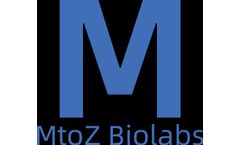Pharma Export 2021 Data Research Articles & Analysis: Older
51 articles found
Understanding the complex world of drug discovery and development necessitates familiarity with key players in cellular communication. A pivotal group in this arena is G Protein-Coupled Receptors (GPCRs). These receptors play a crucial role in transmitting signals across cell membranes, significantly influencing numerous physiological processes. Consequently, GPCRs have become a central focus in ...
In vitro permeability assay kits play a crucial role in the field of pharmaceutical development, particularly when evaluating the absorption characteristics of drugs. These kits allow scientists and researchers to investigate how compounds permeate biological membranes, which is vital for understanding drug bioavailability. Understanding Permeability Permeability refers to the ability of a ...
Glycosylation impurities are a type of chemical commonly encountered in biochemical, medical, and pharmaceutical chemistry research. The presence of these impurities can affect the efficacy, safety, and stability of drugs. Therefore, the detection and analysis of glycosylation impurities are crucial in ensuring the quality and therapeutic effectiveness of pharmaceutical products.What are ...
Elastase is a powerful enzyme that plays a critical role in various biological processes, both in physiological and pathological contexts. It belongs to the family of serine proteases, which are enzymes characterized by a unique serine residue in their active site. This enzyme is known for its ability to degrade elastin, a key protein that provides elasticity and resilience to tissues such as ...
Introduction In the ever-evolving landscape of drug delivery systems, nanoformulation stands out as a revolutionary approach. Nanoformulation leverages nanotechnology to create drug delivery systems that can improve the efficacy, reduce side effects, and precisely target disease sites. This cutting-edge technology has garnered significant attention from researchers and pharmaceutical companies ...
In the vast realm of drug discovery, the fusion of computational prowess and intricate molecular details has given birth to the revolutionary field of protein-small molecule docking. This innovative computational method delves deep into the complex molecular interactions between proteins and small molecules, paving the way for breakthrough advancements in therapeutic approaches and the era of ...
Ongoing research and inventions in the field of oncology focus on the development of small molecule drug therapies for use in brain tumor resection. Small molecule drugs are being developed to target and effectively treat brain tumors to improve therapeutic outcomes. Small particles containing compounds that can enter cells and interact with specific targets to inhibit or modulate their ...
Lipids are the basic substances that make up biological membranes. Through lipid-lipid interactions and interactions between lipids and other biomolecules, a complex network of lipid metabolism is formed, which is involved in a large number of life activities. By studying lipid extracts, information about the lipidome can be obtained. Lipidomics studies lipids in organisms at a systematic level, ...
Rare diseases, also known as orphan diseases, affect a small percentage of the population, making them particularly challenging to diagnose and treat. However, thanks to advancements in medical research and technology, significant progress has been made in the field of rare disease research, from developing accurate diagnostic tools to making effective small-molecule drugs. One of the biggest ...
In the field of pharmaceutical science, stability analysis plays a crucial role in ensuring the safety and efficacy of pharmaceutical products. It is a complex and multifaceted process that requires thorough investigation and understanding of various influencing factors. Stability analysis consists of different methods such as influencing factors analysis, long-term accelerated shelf-life ...
Drug development is a complex and multifaceted process that involves extensive research and testing to ensure safety, efficacy and quality for human use. One critical element in the drug development process is drug metabolism and pharmacokinetics (DMPK), which refers to how a drug is absorbed, distributed, metabolized, and excreted (ADME) from the body. In vitro DMPK services, along with ...
Antibody drug conjugates (ADCs) are a new class of biopharmaceuticals that use monoclonal antibodies to target tumor cells to deliver potent cytotoxic drugs. So far, a total of 15 ADC drugs have been approved worldwide, of which the FDA has approved 13 ADCs for various cancers, including Adcetris®, Kadcyla®, Besponsa®, Mylotarg®, Lumoxiti®, Polivy®, Padcev®, Enhertu ®, Trodelvy® and Blenrep®. As ...
Drug development is a complex and multifaceted process that involves extensive research and testing to ensure safety, efficacy and quality for human use. One critical element in the drug development process is drug metabolism and pharmacokinetics (DMPK), which refers to how a drug is absorbed, distributed, metabolized, and excreted (ADME) from the body. In vitro DMPK services, along with ...
Microspheres play a crucial role in the field of pharmaceuticals, biotechnology, and materials science due to their unique properties and applications. These spherical particles, ranging from a few micrometers to several millimeters in size, have a wide range of uses, including drug delivery systems, cell encapsulation, and as supports for various chemical reactions. Polymeric microspheres, ...
Microencapsulation technology has revolutionized drug delivery systems, allowing for the protection and controlled release of therapeutic agents. Microcapsules, tiny spherical structures capable of encapsulating drugs, offer numerous advantages in terms of stability, targeted delivery, and improved patient outcomes. In this article, we will delve into the methods involved in preparing drug ...
Molecular docking, a critical component of structure-based virtual screening, plays a pivotal role in the field of drug design by predicting the binding interactions between small molecules and proteins. This article explores the various approaches, software tools, and techniques employed in molecular docking and highlights their potential in accelerating drug discovery. The Importance of ...
In the dynamic realm of drug discovery, the pursuit of innovative and effective treatments for diverse diseases demands groundbreaking approaches that can expedite the drug development lifecycle. Amidst these endeavors, Computer-Aided Drug Design (CADD) has emerged as a transformative methodology, harnessing the power of computational tools and simulations to predict, understand, and optimize the ...
Patient-centric drug development is a divisive concept. Dismissed as a buzzword by some. Adopted extensively by others. It has, nevertheless, gained enormous traction over the last decade. This new approach to treatment incorporates patient perspectives into drug development. A key benefit is the keener focus on convenience and safe drug administration. Traditional approaches, prioritising ...
Enzymes, nature's molecular architects, have been at the heart of industrial processes for decades. Today, the dynamic field of Enzyme Engineering and Modification is driving these biocatalysts towards unprecedented capabilities, triggering a wave of transformative applications across diverse sectors. Decoding Enzyme Engineering Enzyme Engineering stands as a cornerstone of modern ...
The Myc gene is one of the most important drivers of cancer in mice and humans. Myc also plays a newly discovered key role in aging, according to a new study in Cell Reports by researchers at UPMC Children's Hospital of Pittsburgh and the University of Pittsburgh School of Medicine. The study, led by Edward V. Prochownik, MD, UPMC Children's Hematology/Oncology Division and Paul C. Gaffney ...











